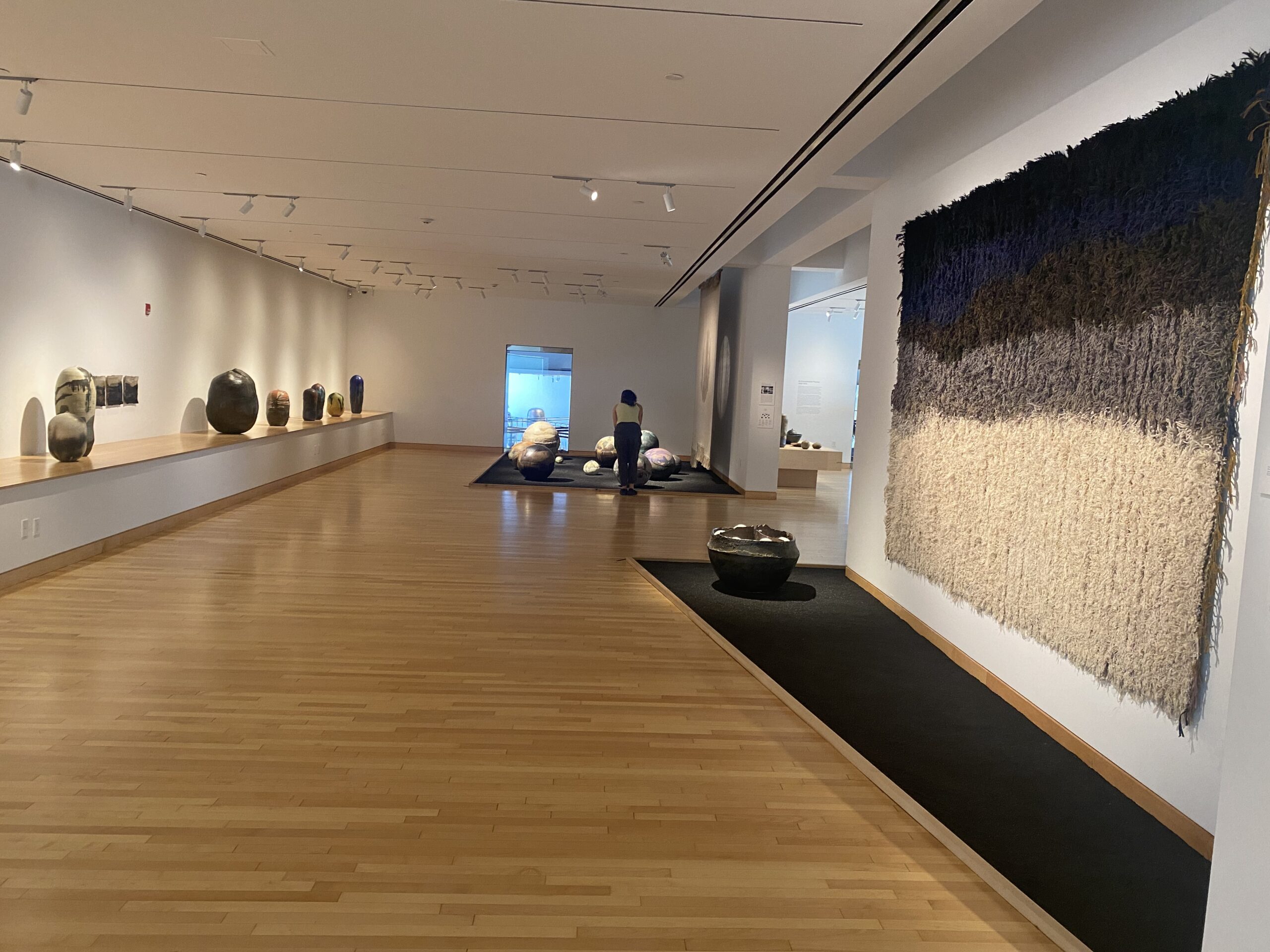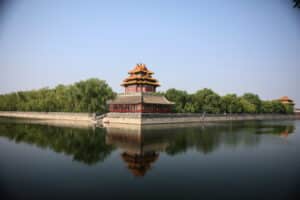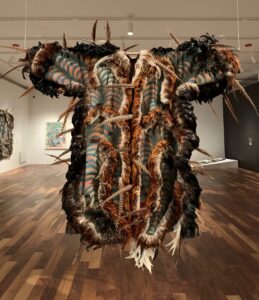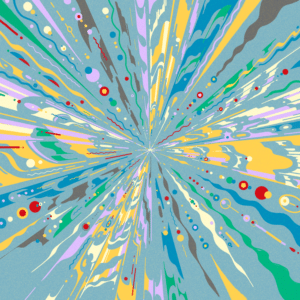Welcome to our American Art Program interview series, where we explore the minds behind museum curation. In each interview, our American Art Program grantees share the curatorial choices behind their exhibitions and how these align with the Henry Luce Foundation’s mission to use American art as a catalyst for dialogue and understanding, celebrating creativity, exploring differences, and helping forge common ground. This interview has been edited for clarity and brevity, and an accompanying video takes you on a visual journey.
Jackie Edwards: As a co-curator, can you explain how the exhibition on Toshiko Takaezu came about and why it’s important to have it now?
Glenn Adamson: My interest in Takaezu’s work began in the 1990s, during my graduate studies. Recently, my focus sharpened while working on an exhibition and book about her colleague Lenore Tawney. I explored more of Takaezu’s work through collaborations with the Toshiko Takaezu Foundation and Peter Russo, a dedicated supporter of this project. We saw an opportunity to highlight Takaezu’s significance as the art world increasingly recognizes the importance of craft-based disciplines and aims to diversify its historical narratives to include more women and artists of color. Takaezu’s work in ceramics, weaving, and painting provides unique insights into abstraction that have not been widely explored before.
Jackie Edwards: Does this project take a new approach to this artist that previous presentations haven’t?
Glenn Adamson: The book that we’ve just produced about her for Yale University Press is probably the largest book ever produced on an artist from any of the craft disciplines in America of the 20th century. It’s an enormous piece of scholarship that looks at her from all of these different angles. We explore her contributions through various new lenses, including her identity, Okinawan heritage, and influence on other art forms such as music. This comprehensive approach redefines her impact and situates her work within broader artistic and cultural contexts.
Jackie Edwards: Is there a particular audience you hope this project will speak to?
Glenn Adamson: One audience would be The Noguchi Museum’s usual audience, which is oriented towards post-war sculpture and, more broadly, towards modern art who wouldn’t think much about craft disciplines at all. And then we have the ceramic community, which is huge. So you have these two different interest groups, and then on top of that, I think there is just a sense of her as a fascinating and inspiring figure of real human value and connectivity. And I also think that there are those who aren’t interested in art or craft, who are responding to her story, this kind of incredible narrative of self-making.
Jackie Edwards: And speaking of the exhibition itself, what do you believe is the essential viewing experience of the exhibition, entirely, or especially, if there are just particular works that would constitute an essential viewing experience?
Glenn Adamson: The Noguchi Museum is already so beautiful. The exhibition benefits greatly from that beautiful setting. This enhances the viewing experience, especially for large-scale works like those from Takaezu’s Star Series. The museum’s space, combined with Leilehua Lanzilotti’s contributions that add sonic and spiritual dimensions, creates an immersive experience that deepens visitors’ engagement with the works. Towards the end of the show, when you get into those large scale works, like the work from the Star Series, that’s very powerful. And you really feel like you’re in the presence of something of historical art consequence there.
Jackie Edwards: You spoke about the larger pieces at the end. Can you speak even more about the impact of scale, or the variety of scale that one would experience in the exhibition, seeing it in person?
Glenn Adamson: The way I think about it is like, is the difference between orbiting around the object and having the object start to orbit around you, where it kind of puts you in a different scale, so you start to feel like you’re in the gravitational field there at the end.
But also, there’s just something there about ambition and the lack of limitation that Takaezu had as an imaginative force. She was making those very large scale works right at the end of her career, when she was in her 70s and 80s. It’s almost like Monet, you know, getting bigger and bigger and bigger and sort of looser and looser. The range of scales in her works, from intimate pieces to grand installations, offer both a commanding presence and a tactile and almost cosmic quality, providing a different kind of engagement.
Jackie Edwards: Is there a personal experience that you had either with the history of your interest in this artist, one of the works of art, or a group of works that will remain with you even after this exhibition or the tour closes?
Glenn Adamson: What comes to mind for me is visiting her house in New Jersey. It’s just full to bursting with objects. It’s as if you’ve walked into this kind of mass that’s populated by all these magic eggs, like a dragon’s cave or something. They are gathered around the fireplace. You go up to the attic, and they literally carpet the floor, so you have to walk precariously to get around them. The studio is downstairs, and you really have this extremely palpable sense of her presence and her creative drive. A lot of people talk about walking into artists’ brains when they go into studios. It’s more like entering her energy field, which was constantly emitting because she wasn’t necessarily very cerebral and she didn’t speak much about her work. She was quite taciturn about it, which made writing the biography a little tricky. But being, especially by her hearth, surrounded by those objects, was really something. It’s like you feel like you’re definitely connecting to something there. I never got a chance to meet her. I could have, but I didn’t have the perspicacity to do it before she died. So there’s always that thing of like, how do you feel like you’re doing the artist justice and getting in touch with them? For me, going to her house, spending time there, and talking to her former apprentices and studio manager Don Fletcher, that was very, very important. It’s a very kind of human project in that sense.
Jackie Edwards: That sounds incredibly meaningful. Thank you for sharing these insights with us.
The Toshiko Takaezu World’s Within exhbition at The Noguchi Museum was co-curated by art historian Glenn Adamson, Noguchi Museum Curator Kate Wiener, and composer and sound artist Leilehua Lanzilotti. Artworks (c) Family of Toshiko Takaezu. The Worlds Within exhibition will travel to the following locations:
Cranbrook Art Museum, Bloomfield Hills, MI (October 9, 2024 – January 12, 2025)
Museum of Fine Arts, Houston, TX (March 2 – May 18, 2025)
Chazen Museum of Art, University of Wisconsin-Madison (September 8–December 23, 2025)
Honolulu Museum of Art (February 13–July 26, 2026)







